".
chords are in every majorand minor key. It will also explain
chords are in a specific key.
Itwill take you from the very beginning to give you a full understanding of therelationship between keys, scales and chords. If you know what chords are in a particular key, you willhave a huge advantage when learning songs or writing your own. If youunderstanding why these chords are in a certain key, you give yourselfan even greater advantage! It is important to know your chords. This book will help you inthat regard. But knowing your chords is not enough! You need to understand thetheory behind chords and chord progressions. You need to know what you'redoing.
This book gives you that knowledge and understanding. It's pointless knowing a bunch of chords if you can't easilyrelate them to the keys they are in, or where they fit on the major or minorscale. You won't make much progress if you are clueless about what you're doing.A lack of information will certainly keep you back. This book offers animmediate solution. "Master Piano Chords By Key - And Give Yourself A Big AdvantageWhen Playing, Learning Or Writing Songs" will explain what is reallyhappening as far as keys and chords are concerned, and this will take yourpiano-playing, improvising, songwriting or composing abilities to new heights.It will help you become a much better player and overall musician. This book will help you come up with chords easily.
It will saveyou time. You will know what chords work well together. With the knowledge thatthis book provides, you will be able to choose chords from a key easily, sothat they sound good together. You will totally understand and be able to createamazing chord progressions. The benefits of understanding chords organized by key areendless. This book will explain everything to you.
Read on and take yourmusical abilities to the next level.
Chapter 1 - How toRead the Circle of Fifths Beforewe take a look at chords, and the keys in which they are, I want you to have anunderstanding of what is known as the
circle of fifths. The circle offifths is great for understanding scales. While the C major scale has no sharpsand flats, the other scales do. The circle of fifths will tell you how manysharps or flats are in a scale or key. It will all become clear as we go along.
Takea look at this circle of fifths diagram. Starting with C and moving to theright (or clockwise) tells us the keys containing sharps. Starting with C andmoving to the left (or counterclockwise) tells us the keys containing flats.  Let'sstart with C and move to the right. The keys move in the order, C G D A E BF# C#. For every new key, a sharp is added.
Let'sstart with C and move to the right. The keys move in the order, C G D A E BF# C#. For every new key, a sharp is added.
In other words, every key inthe sequence has one sharp more than the one before it. So the key of C has nosharps, G has 1 sharp, D has 2 sharps, A has 3 sharps, E has 4 sharps, B has 5sharps, F# has 6 sharps, and C# has 7 sharps. I will soon tell you what thesesharps are. Just focus on the number of sharps for now. Let'sstart on C and move to the left. The keys, as can be seen in the diagram, movein the order, C F Bb Eb Ab Db Gb Cb.
Every time we move to a new key onthe circle of fifths, that key has an additional flat. Therefore, the key of Chas no flats, F has 1 flat, Bb has 2 flats, Eb has 3 flats, Ab has 4 flats, Dbhas 5 flats, Gb has 6 flats and Cb has 7 flats. Let'sbacktrack a little. Why is it that when we move right, the order of keys is C GD A E B F# C#? Well it's because we are moving in fifths. G is a fifth awayfrom C. It's a fifth because there's a total of 5 notes, C, D, E, F and G.
Aneasy way to find an interval of a fifth on your piano is to count 8 keys. Sofrom C to G, those 8 keys would be C, C#, D, D#, E, F, F# and G. Whenwe move left, the key before a particular key must also be a fifth away. Forinstance, F is a fifth away from C (or a fifth lower than C), and Bb is a fifthaway from F. The keys simply move in fifths. Sonow that you understand that each key has a certain number of sharps or flatsexcept for C, I will now tell you what these sharps and flats are.
Thepattern for key signatures with sharps is F# C# G# D# A# E# B#. Here'sa list of major keys and the number of sharps they have, as well as what thesesharps are. Cmajor has no sharps or flats. Gmajor has one sharp, namely, F#. Dmajor has two sharps, namely, F# and C#. Amajor has three sharp, namely, F#, C# and G#, Emajor has four sharps, namely, F#, C#, G# and D#. Bmajor has five sharps, namely F#, C#, G#, D# and A#.
F#major has six sharps, namely, F#, C#, G#, D#, A# and E#. C#major has seven sharps, namely, F#, C#, G#, D#, A#, E# and B#. Youcan clearly see that a different sharp is added as you move right on the circleof fifths.  Thepattern for key signatures with flats is Bb Eb Ab Db Gb Cb Fb. Here'sa list of major keys and the number of flats they have, as well as what theseflats are. Cmajor has no sharps or flats. Fmajor has one flat, namely, Bb.
Thepattern for key signatures with flats is Bb Eb Ab Db Gb Cb Fb. Here'sa list of major keys and the number of flats they have, as well as what theseflats are. Cmajor has no sharps or flats. Fmajor has one flat, namely, Bb.
Bbmajor has two flats, namely, Bb and Eb. Ebmajor has three flats, namely, Bb, Eb and Ab. Abmajor has four flats, namely, Bb, Eb, Ab and Db. Dbmajor has five flats, namely, Bb, Eb, Ab, Db and Gb. Gbmajor has six flats, namely, Bb, Eb, Ab, Db, Gb and Cb. Cbmajor has seven flats, namely, Bb, Eb, Ab, Db, Gb, Cb and Fb.
This time, a new flat is added as you move to the left on thecircle of fifths. Noticethat the order of flats is opposite to the order of flats. Orderof sharps: F# C# G# D# A# E# B# Orderof flats: Bb Eb Ab Db Gb Cb Fb Aslong as you understand the circle of fifths, and know the number of sharps orflats in a key, and the order of sharps and flats, you will be able to formmajor scales quite easily. Firstof all, major scales must include every letter of the musical alphabet. Inother words, they must include the letters, A B C D E F G. No letter can berepeated.
The only difference in the notes of any major scale is that some ofthe letters may be sharp or flat. But in any major scale, you MUST have everyletter of the musical alphabet. Letme explain this further. The notes of the C major scale are C D E F G A B. Buthow about the G major scale? We already know that the key of G major has onesharp and that sharp is F#. Therefore the notes of the G major scale have to beG A B C D E F#.
How about the D major scale? We've seen that the key of D majorhas two sharps, F# and C#. Therefore the notes of the D major scale have to beD E F# G A B C#. Let's do one more. The key of A major has three sharps as wehave seen. The sharps are F#, C# and G#. Therefore the notes of the A majorscale are A B C# D E F# G#.


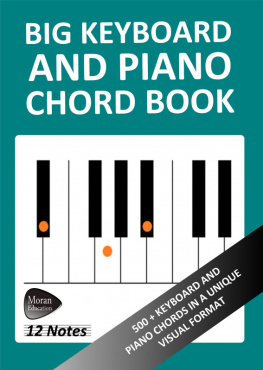
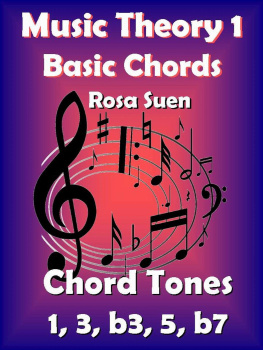

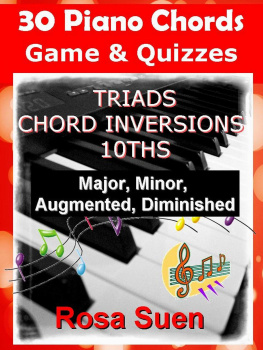


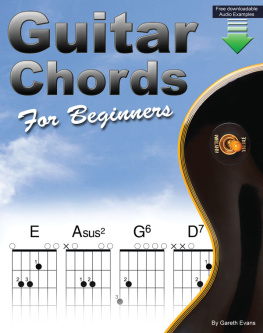
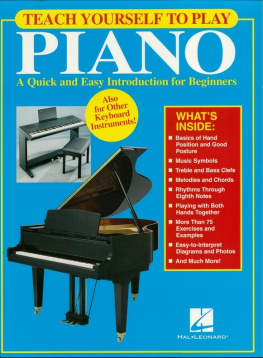

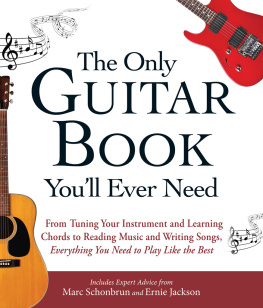
 Let'sstart with C and move to the right. The keys move in the order, C G D A E BF# C#. For every new key, a sharp is added.
Let'sstart with C and move to the right. The keys move in the order, C G D A E BF# C#. For every new key, a sharp is added. Thepattern for key signatures with flats is Bb Eb Ab Db Gb Cb Fb. Here'sa list of major keys and the number of flats they have, as well as what theseflats are. Cmajor has no sharps or flats. Fmajor has one flat, namely, Bb.
Thepattern for key signatures with flats is Bb Eb Ab Db Gb Cb Fb. Here'sa list of major keys and the number of flats they have, as well as what theseflats are. Cmajor has no sharps or flats. Fmajor has one flat, namely, Bb.